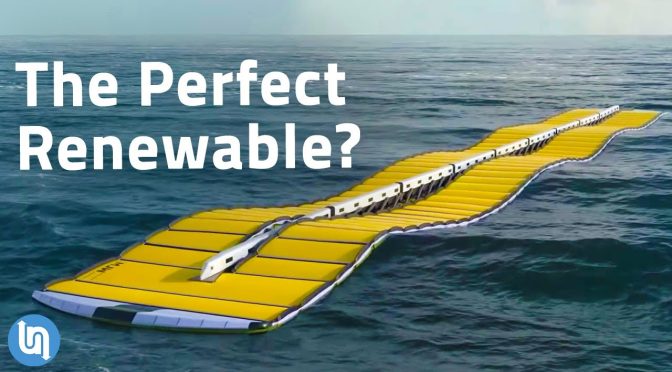This article is based on a video titled “How Wave Power Could Be The Future Of Energy” by Undecided with Matt Ferrell. The video delves into the burgeoning field of wave energy, examining its potential, challenges, and innovations. It discusses how wave energy could be a game-changer in the renewable energy sector, despite the hurdles it faces.
Contents
- The Basics of Wave Energy
- Innovations in Wave Energy Converters
- Challenges and Limitations
- Environmental Impact and Sustainability
- Financial Viability and Future Prospects
- The Dynamic Duo of Wind and Wave Energy
- The Road Ahead
- The video
The Basics of Wave Energy
Wave energy is a form of hydropower that captures the kinetic energy stored in ocean waves. Unlike wind energy, ocean waves are not intermittent, meaning they offer a constant source of potential energy. According to estimates, the U.S. coasts alone could generate up to 2.64 trillion kilowatt-hours of energy annually. This is significant when you consider that it’s roughly 64% of the total U.S. utility-scale electricity generation in 2021. Interestingly, wave energy tends to increase during the winter months when solar energy is less effective (due to shorter days).
Innovations in Wave Energy Converters
China has recently introduced a massive Wave Energy Converter (WEC) called the Nankun Mobile Power Bank. Weighing 6,000 metric tons, this WEC can generate up to 24,000 kilowatt-hours of electricity per day, equivalent to the daily electricity consumption of about 3,500 households. The Nankun represents a significant leap in wave energy technology, but it’s not the only player in the field. There are numerous designs, from point absorber buoys to oscillating water columns, all aiming to efficiently convert wave energy into electricity.
Challenges and Limitations
Despite its potential, wave energy faces several challenges. WECs must be designed to withstand harsh oceanic conditions, including storms and corrosive saltwater. Additionally, installation and maintenance are often difficult and expensive. For instance, finding suitable underwater real estate and anchoring the WEC can cost two to three times more than the device itself. These challenges have made it difficult to test WECs at scale or in controlled environments (which is why the field is considered less researched than other renewables like solar and wind).
Environmental Impact and Sustainability
Companies like CalWave are conducting studies to assess the environmental impact of WECs. These studies consider the potential for entanglement and collision with marine life, as well as the emission of sound or electromagnetic fields. CalWave’s X-Wave series of WECs have received favorable environmental grades and are designed to last for 20 years or more. The X-Wave devices can also reposition themselves autonomously to avoid damage during large storms, adding an extra layer of sustainability.
Financial Viability and Future Prospects
The Levelized Cost of Energy (LCOE) for wave energy is currently high compared to other renewables like solar and wind. However, a 2019 study from the National Renewable Energy Laboratory suggested that the LCOE of wave energy could be as low as 30 cents by 2033. This would make it competitive with other forms of renewable energy, especially if co-located with offshore wind farms to share infrastructure and maintenance costs.
The Dynamic Duo of Wind and Wave Energy
Co-locating wave energy devices with offshore wind farms can offer synergistic benefits. While wave energy is strongest in the winter, wind energy tends to surge in the summer. This complementary relationship can help maintain a consistent energy supply throughout the year. CalWave’s X-Wave devices are engineered to work both independently and in conjunction with offshore wind farms, making them a versatile option for future renewable energy projects.
The Road Ahead
Wave energy is still a nascent field with unique engineering challenges, but its potential is too significant to ignore. Innovations like the Nankun Mobile Power Bank and CalWave’s X-Wave series are paving the way for more efficient and sustainable wave energy solutions. As research continues to grow and technologies advance, wave energy could become a vital component of the global renewable energy landscape.

